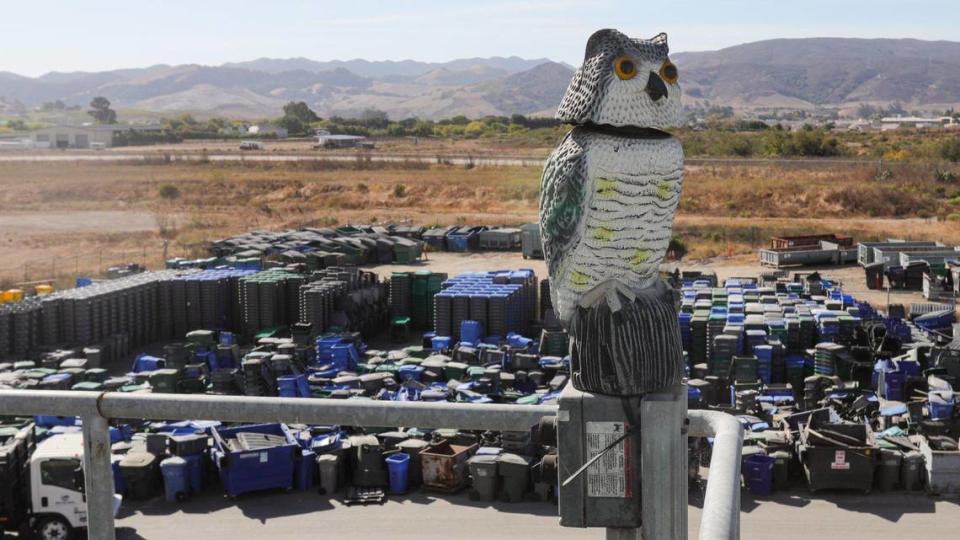From green waste to renewable energy: A look inside SLO County’s anaerobic digester facility
After San Luis Obispo County residents toss yard waste and food scraps into their green bin, the waste is transformed into renewable energy.
San Luis Obispo County green waste travels from its green bin on the curb to Kompogas San Luis Obispo, an anaerobic digester facility that converts about 36,000 tons of waste per year into electricity that powers 600 homes.
“We’re taking organic waste and we’re using it as a resource to produce renewable energy,” said Thomas Gratz, the United States Sales Manager for Hitachi Zosen Inova, the parent company of Kompogas.
The digester is a sealed, oxygen-free environment that “acts like a large, metal stomach,” Gratz said.
Bacteria in the digester converts proteins and sugars in the waste into energy that’s plugged into PG&E’s power grid, similar to how a stomach extracts energy from food to energize the body.
The facility also produces liquid and solid compost sold to commercial farms “to help build healthy soil,” Gratz said.
The facility, located at 4300 Old Santa Fe Road in San Luis Obispo, opened in 2018, and is the first of its kind in North America, according to Gratz.
The facility processes green waste from communities south of the Cuesta Grade and North of Santa Barbara County, along with Cal Poly, Cuesta College, Costco, the California Men’s Colony and even a load a week from Paso Robles.
Kompogas is a zero waste facility, according to Gratz. Plants use compost as they grow into food. When that food is discarded, it runs through the anaerobic digester facility to make more compost, he said.
“For us, it’s about creating the circular economy,” Integrated Waste Management Authority executive director Peter Cron said. “If it goes in here, let it go out to agriculture.”
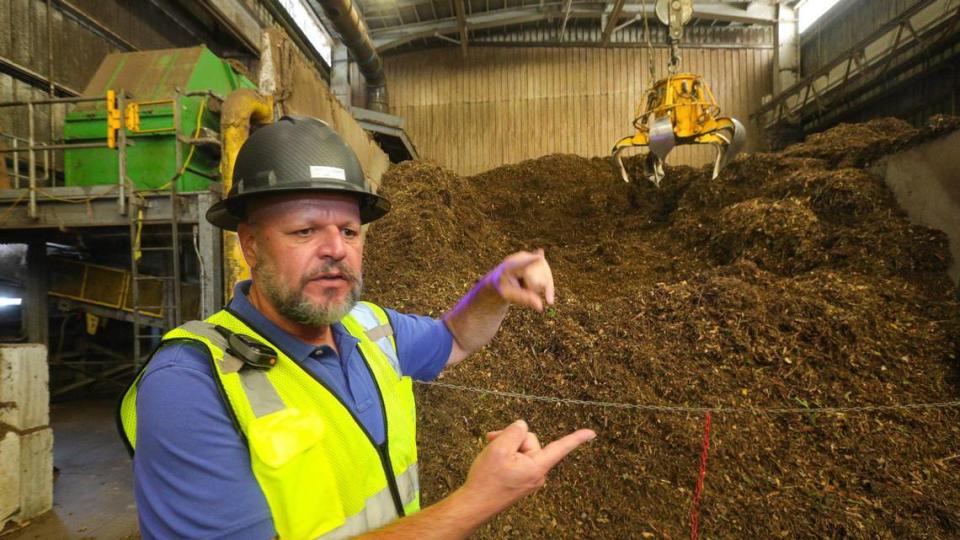
From food scraps to electricity: How the facility operates
First, a garbage truck dumps a pile of green waste onto the receiving floor of the plant. The plant receives about 100 tons of green waste per day, Gratz said, including heaps of tree limbs and discarded jack-o’-lanterns.
Machines remove contaminants like plastic bags, rubber balls and treated lumber from the waste before it is shredded into smaller pieces. A magnet then pulls metals like forks and barbed wire out of the waste pile.
“There might be the occasional tea kettle that somebody tries to hide in the green bin or tractor weights or things like that,” Gratz said. “We need to get that out.”
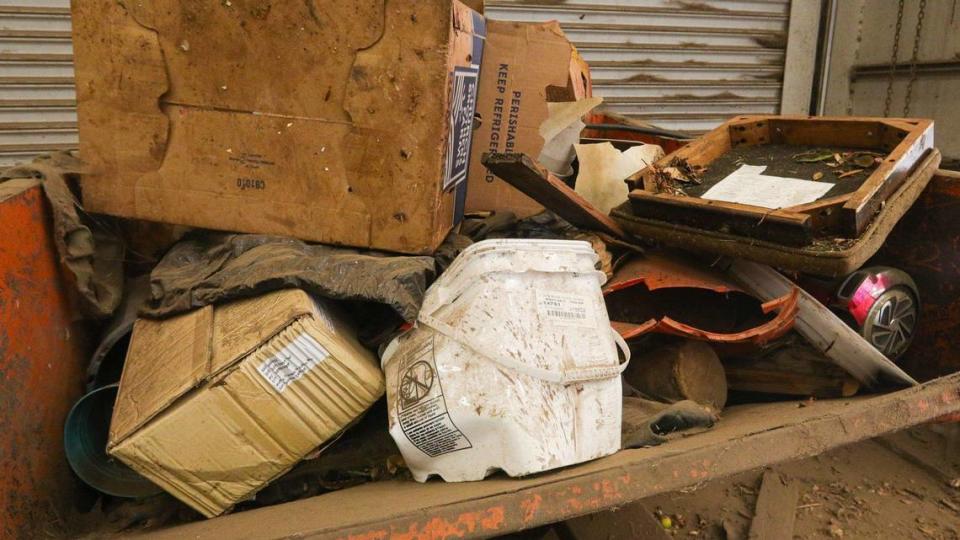
Then, a machine collects and stores any grease in the pile. The grease is later fed into the digester in small amounts to avoid harming the bacteria.
“If you eat a bowl of whipped cream, you’re going to get an upset stomach,” Gratz said. “Same here. If you dump all these fats or grease, which is very powerful, you basically kill the bacteria and then you shut it down.”
Then, a crane loads the garbage onto a conveyor belt that feeds the belly of the beast: the digester.
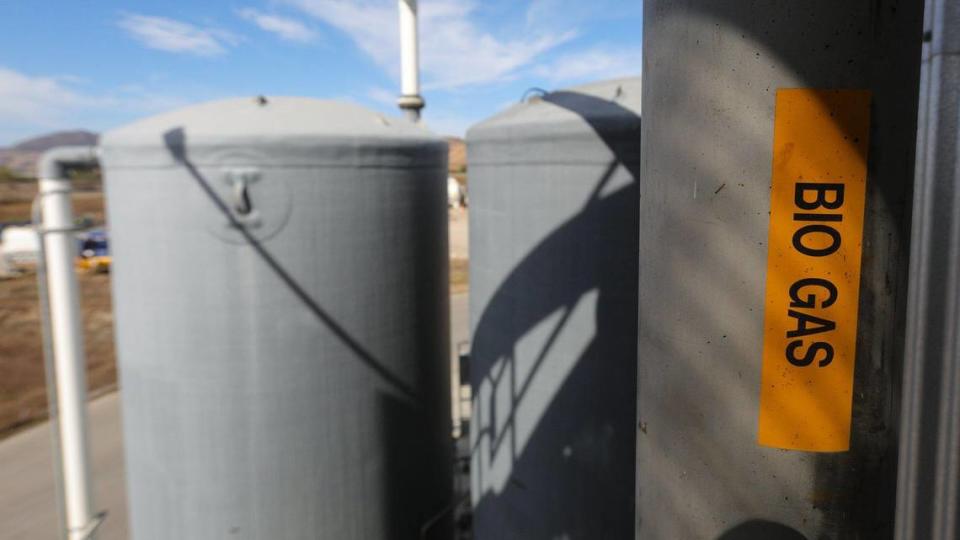
The waste stews in the digester for 14 days at 131 degrees Fahrenheit, Gratz said. The temperature is hot enough to kill “bad actors” like salmonella and E. coli, while destroying seeds that would contaminate the compost, he said.
“The digester is heated, very similar to our stomachs,” Gratz said. “That’s when the bacteria is happy and does the job.”
According to Gratz, 600,000 gallons of porridge-like waste churn in the digester at all times.
No one ever opens the digester because oxygen disrupts the bacteria, he said. The oldest anaerobic digester facility has remained sealed for 28 years, according to Gratz.
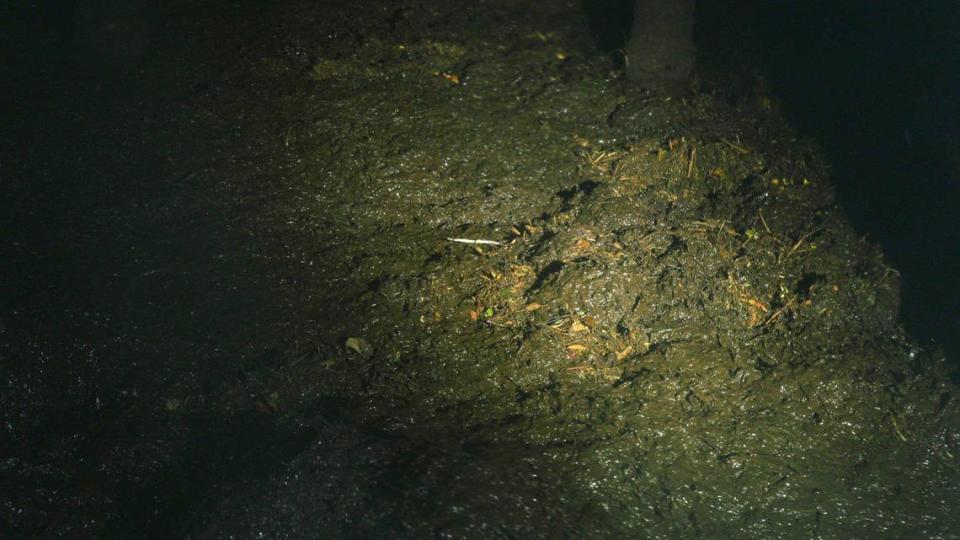
Like humans, the digester also needs a “balanced diet,” Gratz said.
Typically, the garbage is 80% yard waste, 12% food waste and 8% fats or grease, according to Gratz. The ideal recipe, however, would be 25% yard waste and 70% food waste because food produces more energy, he said.
And the primary goal of the plant is to produce renewable energy, according to Gratz.
Gratz said 20% of the waste is converted into biogas for renewable energy, while the rest becomes liquid and solid compost.
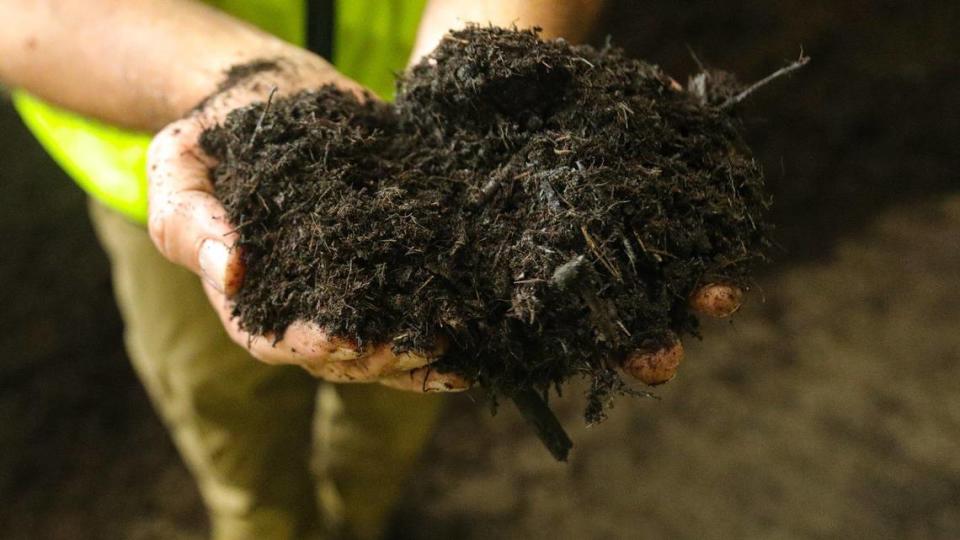
The biogas produces enough electricity to power the facility and about 600 homes per day, according to Gratz.
About 20% of the electricity powers the anaerobic digester facility, while the rest is sold to PG&E for the grid, he said.
Meanwhile, the compost is sent to another corner of the facility to “blow dry” for 21 days, removing excess odors and moisture, he said.
That compost is sold to commercial farmers, continuing a sustainable cycle, according to Gratz.
